| ||||||||||||||||||||||||||||
CURATOR INDEX
|
|
STATUS: Out of stock Temporarily out of stock pending additional inventory. |
 Anthony James: Morphic Fields
Anthony James: Morphic Fields
Published by Hatje Cantz.
Text by Katja Eichinger, Anthony James, Christian Kracht, Matthias Mühling, Glenn O'Brien, Rupert Sheldrake.
PUBLISHER
Hatje Cantz
BOOK FORMAT
Hardcover, 9 x 10.75 in. / 160 pgs / 126 color.
PUBLISHING STATUS
Pub Date 9/30/2014
Out of stock indefinitely
DISTRIBUTION
D.A.P. Exclusive
Catalog: FALL 2014 p. 175
PRODUCT DETAILS
ISBN 9783775738217 FLAT40
List Price: $55.00 CAD $72.50
AVAILABILITY
Not available
STATUS: Out of stock indefinitely. |
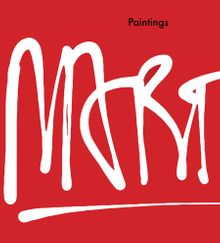 Eddie Martinez: Paintings
Eddie Martinez: Paintings
Published by PictureBox.
Text by Ross Simonini, Glenn O'Brien, Monica Ramirez-Montagut.
PUBLISHER
PictureBox
BOOK FORMAT
Hardcover, 9.5 x 10.5 in. / 256 pgs / 200 color.
PUBLISHING STATUS
Pub Date 11/30/2013
Out of print
DISTRIBUTION
D.A.P. Exclusive
Catalog: FALL 2013 p. 132
PRODUCT DETAILS
ISBN 9781939799067 TRADE
List Price: $39.95 CAD $53.95 GBP £34.99
AVAILABILITY
Not available
STATUS: Out of print | 00/00/00 For assistance locating a copy, please see our list of recommended out of print specialists |
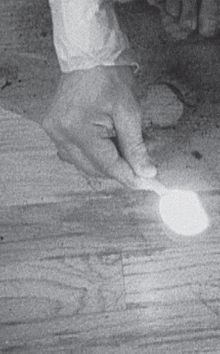 Dash Snow: I Love You, Stupid
Dash Snow: I Love You, Stupid
Published by D.A.P..
Edited by Mary Blair Hansen. Text by Glenn O'Brien.
Dash Snow (1981–2009) was a great-grandson of the founders of the Menil Collection in Houston, Dominique de Menil and John de Menil, and grandson of the Buddhist scholar Robert Thurman. After spending his teen years as a graffiti artist, Snow moved to New York, where he died on the evening of July 13, 2009, at Lafayette House, a hotel in lower Manhattan."
PUBLISHER
D.A.P.
BOOK FORMAT
Paperback, 7.25 x 11 in. / 440 pgs / 430 color.
PUBLISHING STATUS
Pub Date 7/31/2013
Out of stock indefinitely
DISTRIBUTION
D.A.P. Exclusive
Catalog: SPRING 2013 p. 84
PRODUCT DETAILS
ISBN 9781938922145 TRADE
List Price: $55.00 CAD $72.50
AVAILABILITY
Not available
STATUS: Out of stock indefinitely. |
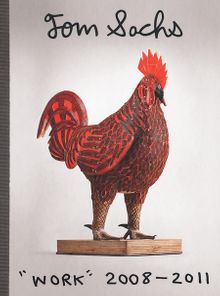 Tom Sachs: Work
Tom Sachs: Work
Published by Sperone Westwater, New York.
Edited by Alex Chohlas-Wood. Interview by Glenn O'Brien.
PUBLISHER
Sperone Westwater, New York
BOOK FORMAT
Hardcover, 8.5 x 11 in. / 120 pgs / 59 color / illustrated throughout.
PUBLISHING STATUS
Pub Date 7/31/2012
Out of print
DISTRIBUTION
D.A.P. Exclusive
Catalog: FALL 2012 p. 148
PRODUCT DETAILS
ISBN 9780982837269 TRADE
List Price: $45.00 CAD $55.00
AVAILABILITY
Not available
STATUS: Out of print | 00/00/00 For assistance locating a copy, please see our list of recommended out of print specialists |
 Street and Studio
Street and Studio
From Basquiat to Seripop
Published by Verlag für moderne Kunst.
Edited by Cathérine Hug, Gerald Matt, Thomas Miessgang. Text by Glenn O'Brien, Dieter Buchhart. Interviews with Rita Ackermann, Charlie Ahearn, Tamra Davis, Ari Marcopoulos, Glenn O'Brien.
PUBLISHER
Verlag für moderne Kunst
BOOK FORMAT
Paperback, 9 x 11 in. / 200 pgs / illustrated throughout.
PUBLISHING STATUS
Pub Date 12/31/2010
Out of print
DISTRIBUTION
D.A.P. Exclusive
Catalog: FALL 2010 p. 117
PRODUCT DETAILS
ISBN 9783869840161 TRADE
List Price: $55.00 CAD $72.50
AVAILABILITY
Not available
STATUS: Out of print | 00/00/00 For assistance locating a copy, please see our list of recommended out of print specialists |
 Jean-Michel Basquiat
Jean-Michel Basquiat
Published by Hatje Cantz.
Text by Dieter Buchhart, Glenn O'Brien, Jean-Louis Prat, Susanne Reichling.
Jean-Michel Basquiat was born in Brooklyn, New York, to a Puerto Rican mother and a Haitian father--an ethnic mix that meant young Jean-Michel was fluent in French, Spanish and English by the age of 11. In 1977, at the age of 17, Basquiat took up graffiti, inscribing the landscape of downtown Manhattan with his signature "Samo." In 1980 he was included in the landmark group exhibition The Times Square Show; the following year, at the age of 21, Basquiat became the youngest artist ever to be invited to Documenta. By 1982, Basquiat had befriended Andy Warhol, later collaborating with him; Basquiat was much affected by Warhol's death in 1987. He died of a heroin overdose on August 22, 1988, at the age of 27.
PUBLISHER
Hatje Cantz
BOOK FORMAT
Hardcover, 10 x 12.25 in. / 224 pgs / 334 color.
PUBLISHING STATUS
Pub Date 11/30/2010
Active
DISTRIBUTION
D.A.P. Exclusive
Catalog: FALL 2010 p. 171
PRODUCT DETAILS
ISBN 9783775725934 TRADE
List Price: $65.00 CAD $87.00
AVAILABILITY
In stock
in stock $65.00 Free Shipping UPS GROUND IN THE CONTINENTAL U.S. |
 Jean-Michel Basquiat: 1981, the Studio of the Street
Jean-Michel Basquiat: 1981, the Studio of the Street
Published by Charta.
Introduction by Jeffrey Deitch. Interviews with Fred "Fab 5 Freddy" Brathwaite, Arto Lindsay, Annina Nosei, Diego Cortez, Glenn O'Brien, Text by Suzanne Mallouk, Gerard Basquiat, Michael Holman. Chronology by Franklin Sirmans.
PUBLISHER
Charta
BOOK FORMAT
Hardcover, 9.5 x 12 in. / 248 pgs / 146 color / 14 bw.
PUBLISHING STATUS
Pub Date 2/1/2007
Out of print
DISTRIBUTION
D.A.P. Exclusive
Catalog: SPRING 2007 p. 117
PRODUCT DETAILS
ISBN 9788881586257 TRADE
List Price: $70.00 CAD $85.00
AVAILABILITY
Not available
STATUS: Out of print | 00/00/00 For assistance locating a copy, please see our list of recommended out of print specialists |
 Richard Prince
Richard Prince
Published by Guggenheim Museum Publications.
Text by Nancy Spector, Glenn O'Brien, Jack Bankowsky.
Highlighting key examples from the all the major series of Prince's oeuvre, this fully illustrated volume also debuts works created specifically for the exhibition. It features a critical overview by the Guggenheim Museum's Nancy Spector and an essay by Artforum Editor-at-Large Jack Bankowsky, which discusses Prince's environmental installations, including the Spiritual America Gallery, his First House and Second House, and his Library in Upstate New York. In addition, cultural commentator Glenn O'Brien contributes a series of interviews with popular culture initiators like Annie Proulx, Phyllis Diller, John Waters, Michael Ovitz, Kim Gordon and Robert Mankoff, among many others, providing a composite portrait of Prince's themes alongside an insider's view of the formation of mass-cultural taste.
PUBLISHER
Guggenheim Museum Publications
BOOK FORMAT
Hardcover, 8 x 11 in. / 368 pgs / 438 color.
PUBLISHING STATUS
Pub Date 10/1/2007
Out of print
DISTRIBUTION
D.A.P. Exclusive
Catalog: FALL 2007 p. 169
PRODUCT DETAILS
ISBN 9780892073634 TRADE
List Price: $60.00 CAD $70.00
AVAILABILITY
Not available
STATUS: Out of print | 00/00/00 For assistance locating a copy, please see our list of recommended out of print specialists |
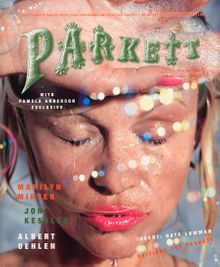 Parkett No. 79 Jon Kessler, Marilyn Minter and Albert Oehlen
Parkett No. 79 Jon Kessler, Marilyn Minter and Albert Oehlen
Published by Parkett.
Edited by Cay Sophie Rabinowitz. Text by Mark Godfrey, Glenn O'Brien, Katy Siegel, Paul Bonaventura, Andrea Scott, Pamela Lee.
PUBLISHER
Parkett
BOOK FORMAT
Paperback, 8 x 10 in. / 300 pgs / illustrated throughout.
PUBLISHING STATUS
Pub Date 5/1/2007
Out of print
DISTRIBUTION
D.A.P. Exclusive
Catalog: FALL 2007 p. 95
PRODUCT DETAILS
ISBN 9783907582398 TRADE
List Price: $32.00 CAD $42.50
AVAILABILITY
Not available
STATUS: Out of print | 00/00/00 For assistance locating a copy, please see our list of recommended out of print specialists |
 Lisa Eisner: Shriners
Lisa Eisner: Shriners
Published by Greybull Press.
Introduction by Glenn O'Brien.
So, what is a Shriner? Legend has it that in 1872, a group of Masons who were inclined to lunch together at the Knickerbocker Cottage in New York City formed the fraternal order known as the Shriners as a fellowship for Masons who had completed certain requirements. In their heyday in the 1940s-1960s, there were a million Shriners in the United States, including John Wayne, Red Skelton, Gene Autry, Harold Lloyd, and Franklin Roosevelt. Today this slice of Americana is in danger of extinction. Eisner's vivid photographs offer intimate access into a world we won't soon forget.
PUBLISHER
Greybull Press
BOOK FORMAT
Clothbound, 9.5 x 11 in. / 168 pgs / 137 color / 25 duotone.
PUBLISHING STATUS
Pub Date 11/2/2004
No longer our product
DISTRIBUTION
D.A.P. Exclusive
Catalog: FALL 2004
PRODUCT DETAILS
ISBN 9780972778831 TRADE
List Price: $55.00 CAD $65.00
AVAILABILITY
Not available
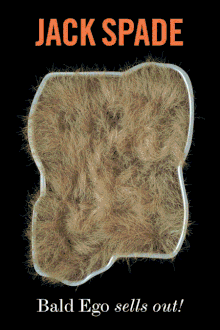 Bald Ego No. 3
Bald Ego No. 3
Published by Bald Ego Publishing.
PUBLISHER
Bald Ego Publishing
BOOK FORMAT
Paperback, 6 x 9 in. / 200 pgs / illustrated throughout.
PUBLISHING STATUS
Pub Date 8/2/2004
No longer our product
DISTRIBUTION
D.A.P. Exclusive
Catalog: FALL 2004
PRODUCT DETAILS
ISBN 9781564661203 TRADE
List Price: $15.00 CAD $17.50
AVAILABILITY
Not available
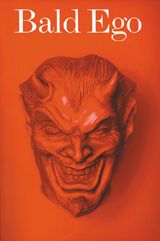 Bald Ego No. 2
Bald Ego No. 2
Published by Bald Ego Publishing.
Edited by Glenn O'Brien and Max Blagg.
PUBLISHER
Bald Ego Publishing
BOOK FORMAT
Paperback, 6 x 9 in. / 220 pgs / 60 color / 40 bw.
PUBLISHING STATUS
Pub Date 1/2/2004
No longer our product
DISTRIBUTION
D.A.P. Exclusive
Catalog: SPRING 2004
PRODUCT DETAILS
ISBN 9781564661142 TRADE
List Price: $15.00 CAD $17.50
AVAILABILITY
Not available
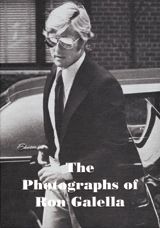 The Photographs Of Ron Galella
The Photographs Of Ron Galella
Published by Greybull Press.
Edited by Steven Bluttal. Foreword by Diane Keaton. Introduction by Tom Ford.
PUBLISHER
Greybull Press
BOOK FORMAT
Paperback, 9.5 x 13 in. / 258 pgs / 16 color / illustrated throughout.
PUBLISHING STATUS
Pub Date 7/2/2003
No longer our product
DISTRIBUTION
D.A.P. Exclusive
Catalog: FALL 2003
PRODUCT DETAILS
ISBN 9780972778817 TRADE
List Price: $39.95 CAD $50.00
AVAILABILITY
Not available
 Tom Sachs: Nutsy's
Tom Sachs: Nutsy's
Published by Guggenheim Museum Publications.
Edited by John G. Hanhardt. Essays by John G. Hanhardt, Maria-Christina Villase“or and Glenn O'Brien.
PUBLISHER
Guggenheim Museum Publications
BOOK FORMAT
Paperback, 8.25 x 11 in. / 136 pgs / 147 color / 15 bw.
PUBLISHING STATUS
Pub Date 10/2/2003
Out of print
DISTRIBUTION
D.A.P. Exclusive
Catalog: FALL 2003
PRODUCT DETAILS
ISBN 9780892072927 TRADE
List Price: $40.00 CAD $50.00
AVAILABILITY
Not available
STATUS: Out of print | 11/28/2010 For assistance locating a copy, please see our list of recommended out of print specialists |
 Sock Monkeys
Sock Monkeys
(200 out of 1,863)
Published by Ideal World Books.
Photographs by Arne Svenson. Edited by Ron Warren. With contributions by Simon Doonan, Jonathan Safran Foer, Neil Gaiman, Peter Getty, Penn Jillette, M. Raven Metzner, Isaac Mizrahi, Glenn O'Brien, Dale Peck, Ingrid Schaffner.
In 1985 Ron Warren began collecting sock monkeys--those icons of American thrift and inventiveness that for generations have been hand-stitched from a pair of red-heel work socks. Years later he met photographer Arne Svenson (author of the recent popular volume Chewed) who, intrigued by the obsessive nature and growing size of the collection, began with equal obsession to document individually its more than 1,800 examples. To convey the distinct personality imbued in each monkey by its maker, Svenson photographs them in the manner of classical black-and-white portraiture: flatteringly lit, cropped at the shoulders, eyes to the camera. The first 200 of these sock monkey portraits, reproduced larger than life as full-page duotones, are assembled in this book. Invited contributors, including novelists Jonathan Safran Foer, Neil Gaiman and Dale Peck; entertainers Penn & Teller; and fashion commentators Simon Doonan and Isaac Mizrahi, have interjected short stories inspired by the subject of their favorite sock monkey photograph. The result is an engaging, humorous and at times disturbing reanimation of creatures long relegated to the attic or the back of the closet.
PUBLISHER
BOOK FORMAT
Flexibound, 8 x 10 in. / 224 pgs / 2 color / illustrated throughout.
PUBLISHING STATUS
Pub Date 12/2/2002
Out of print
DISTRIBUTION
D.A.P. Exclusive
Catalog: SPRING 2003 p. 51
PRODUCT DETAILS
ISBN 9780972211123 TRADE
List Price: $24.95 CAD $33.95 GBP £22.00
AVAILABILITY
Not available
STATUS: Out of print | 00/00/00 For assistance locating a copy, please see our list of recommended out of print specialists |
The Photographs Of Ron Galella 1960-1990
Published by Greybull Press.
Edited by Steven Bluttal. Foreword by Diane Keaton. Introduction by Tom Ford. Interview by Glenn O'Brien.
PUBLISHER
Greybull Press
BOOK FORMAT
Hardcover, 10 x 14 in. / 248 pgs / 16 color / 180 duotone
PUBLISHING STATUS
Pub Date 4/2/2002
No longer our product
DISTRIBUTION
D.A.P. Exclusive
Catalog: SPRING 2002
PRODUCT DETAILS
ISBN 9780967236667 TRADE
List Price: $75.00 CAD $90.00
AVAILABILITY
Not available
 Bald Ego
Bald Ego
Published by Bald Ego Publishing.
Edited by Max Blagg and Glenn O'Brien.
PUBLISHER
Bald Ego Publishing
BOOK FORMAT
Paperback, 6 x 9 in. / 200 pgs / 40 color / 16 bw.
PUBLISHING STATUS
Pub Date 10/2/2002
No longer our product
DISTRIBUTION
D.A.P. Exclusive
Catalog: FALL 2002
PRODUCT DETAILS
ISBN 9781564660947 TRADE
List Price: $15.00 CAD $17.50
AVAILABILITY
Not available
 Richard Prince & Glen O'Brien: Human Nature
Richard Prince & Glen O'Brien: Human Nature
(Dub Version)
Published by Greybull Press.
Artwork by Richard Prince. Contributions by Glenn O'Brien.
PUBLISHER
Greybull Press
BOOK FORMAT
Slipcased, 7 x 9.5 in. / 128 pgs / 40 silkscreened bw images.
PUBLISHING STATUS
Pub Date 3/2/2001
No longer our product
DISTRIBUTION
D.A.P. Exclusive
Catalog: SPRING 2001
PRODUCT DETAILS
ISBN 9780967236636 SDNR30
List Price: $75.00 CAD $90.00
AVAILABILITY
Not available
